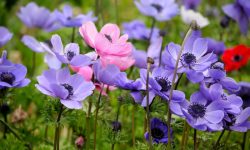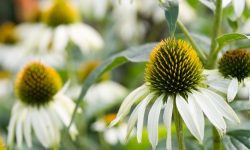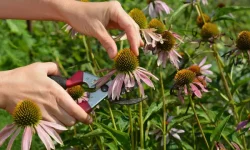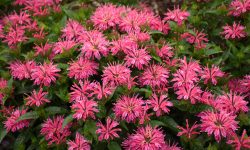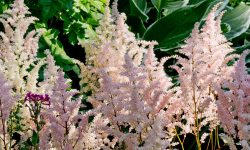Poppies are among the most captivating flowers in the garden, with their delicate petals and dazzling colors that brighten every corner. Many gardeners eagerly wait for the moment these blooms appear, transforming landscapes into breathtaking displays of red, orange, pink, or white. But knowing exactly when poppies bloom is the key to enjoying their beauty at its peak.
Understanding the blooming cycle of poppies allows you to plan your garden more effectively and extend their display season. From the early signs of growth to the full explosion of flowers, every stage holds its own charm. In this guide, we’ll explore not only when poppies bloom but also the conditions that influence their timing and how you can ensure a vibrant, long-lasting garden filled with these iconic flowers.
Understanding the Beauty and Symbolism of Poppies

Poppies are not only admired for their delicate petals and striking colors but also for the deeper meanings they carry across different cultures. Their vibrant shades of red, orange, pink, and white have long been associated with passion, remembrance, and renewal. In literature and art, poppies often symbolize fleeting beauty and the transient nature of life, reminding us to cherish each moment. Beyond their aesthetic value, these flowers evoke strong emotions and stand as timeless icons in gardens worldwide.
The symbolism of poppies varies depending on region and tradition. Red poppies are particularly well-known as symbols of remembrance, especially honoring soldiers who sacrificed their lives in war. In some cultures, poppies also represent peace, sleep, and consolation, as their gentle appearance is linked to rest and tranquility. Gardeners and flower lovers embrace poppies not only for their charm but also for their layered meanings that resonate through history and culture. By planting poppies, you are not just adding bursts of color to your garden but also carrying forward a rich heritage of symbolism that connects beauty with human experiences.
Poppies captivate not only with their fleeting yet brilliant blooms but also with the deep symbolism they carry across cultures. In many traditions, the vibrant red petals represent life, remembrance, and resilience, making the flower both delicate and powerful in meaning. Beyond the red varieties, other shades like orange, yellow, and white also hold symbolic associations, such as renewal, peace, and hope. This rich tapestry of symbolism elevates poppies from being just seasonal flowers to cultural icons that inspire poetry, art, and memorials worldwide. Their beauty is both visual and emotional, offering a timeless reminder of the bond between nature and human expression.
How Long Do Poppies Bloom and How to Extend Their Flowering
Poppies often bloom for a few weeks, but their timing depends on the variety and climate. Annual poppies usually flower in late spring or early summer and may last three to four weeks. Perennial poppies can bloom for a similar period, though some varieties produce blossoms again if cared for properly. Weather also affects their longevity, with cooler temperatures helping blooms last longer.
To extend the flowering season, gardeners can practice deadheading by removing faded flowers promptly. This prevents the plant from directing energy into seed production and encourages more blooms. Consistent watering, especially during dry spells, supports prolonged flowering. Fertile and well-drained soil also plays a role in sustaining healthy plants that bloom repeatedly. Mulching around the base can regulate soil moisture and temperature, giving poppies a longer life in the garden.
Another way to enjoy poppies for an extended time is to stagger planting. By sowing seeds in intervals of a few weeks, gardeners can ensure waves of blossoms throughout the growing season. Combining early and late-blooming varieties creates a continuous display. With proper care, thoughtful planning, and simple techniques like deadheading, poppies can bring vibrant color for a longer period, enriching any garden with lasting charm.
The Different Types of Poppies and Their Blooming Seasons
Poppies come in a wide range of species, each with unique charm and seasonal blooming patterns. The most iconic is the Corn Poppy (Papaver rhoeas), known for its bright red petals and historical symbolism. These typically bloom in late spring to early summer, painting fields with waves of crimson. Oriental Poppies (Papaver orientale), on the other hand, produce large, show-stopping flowers in shades of red, pink, and orange. They bloom from late spring into early summer, often lasting several weeks if properly cared for. Another favorite, the Iceland Poppy (Papaver nudicaule), brings soft pastel shades like cream, yellow, and peach, blooming in cool spring weather and sometimes extending into early summer depending on the climate.
Some varieties offer extended or later-season color. California Poppies (Eschscholzia californica), with their silky orange and golden blooms, are known for their long flowering period, often from late spring through fall in mild regions. They reseed easily, ensuring ongoing displays of color year after year. Meanwhile, Himalayan Blue Poppies (Meconopsis betonicifolia) stand out for their striking blue petals. Although more challenging to grow, they reward gardeners with late spring to early summer blooms in cooler, moist climates.
By choosing a mix of poppy varieties, gardeners can enjoy successive waves of blooms throughout the growing season. Planting different species ensures that as one type fades, another begins to open, keeping the garden vibrant from early spring until autumn. Understanding each poppy’s blooming season also allows for better planning in companion planting and seasonal garden design, creating an ever-changing yet harmonious display of color.
Ideal Growing Conditions for Healthy Poppy Blooms
Poppies thrive best when planted in full sunlight, as they need at least six hours of direct light daily. Without enough sun, the plants may grow weak and produce fewer flowers. Choose a spot in your garden that remains bright for most of the day. This ensures strong stems, vibrant petals, and a longer blooming season. Sunlight also helps reduce moisture-related diseases that often affect poppies.
Soil quality plays a vital role in healthy poppy growth. These flowers prefer well-draining soil that is moderately fertile. Heavy clay soil should be improved with sand or compost to prevent waterlogging. Poppies dislike standing water, which can cause root rot. Adding organic matter also enriches the soil, providing essential nutrients for steady growth. A slightly alkaline to neutral pH level is considered ideal. With the right soil, poppies establish faster and bloom more abundantly.
Watering is another key factor in creating the right conditions for poppies. Young seedlings require consistent moisture until they are well established. Once mature, poppies become drought tolerant and need less frequent watering. Overwatering should be avoided, as it weakens the plants and encourages fungal problems. Mulching can help retain soil moisture and regulate temperature during hot months. By balancing sunlight, soil, and water, gardeners can enjoy healthy and colorful poppy displays year after year.
Factors That Influence Poppy Blooming Time
Climate and Temperature Conditions
Climate strongly shapes the rhythm of poppy blooming. In temperate regions with cool springs, many poppy varieties begin to flower in late spring and reach their peak in early summer. The moderate weather allows buds to develop slowly, producing vibrant, long-lasting blooms. In warmer climates, blooms may arrive earlier, sometimes starting in early spring, but the heat can also shorten their overall duration. Excessive warmth can stress plants, leading to smaller flowers and a faster decline in bloom quality.
Cooler nights are particularly beneficial, as they help poppies retain their brightness and structural strength. Gardeners in hot regions often notice that blooms fade quickly without a drop in nighttime temperatures. By understanding local climate patterns, growers can better anticipate when their poppies will flower. This knowledge helps them adjust planting schedules and adopt strategies such as shading or mulching to extend the blooming period and maintain flower health.
Soil and Sunlight Requirements
Sunlight is essential for poppies to thrive, as these flowers flourish with a minimum of six hours of direct exposure daily. Adequate sunlight ensures the production of sturdy stems and richly colored petals. Without sufficient light, plants may become leggy and weak, reducing the number and quality of blossoms. Positioning poppies in an open area without shade from trees or buildings maximizes their ability to photosynthesize and create abundant blooms.
Soil quality is equally important in determining when and how well poppies bloom. These plants prefer well-drained, sandy, or loamy soils that support deep root systems and consistent nutrient availability. Heavy clay soils tend to retain excess water, which can stunt growth and delay flowering. Preparing the soil with organic matter before planting enhances fertility and drainage. By ensuring both soil and sunlight needs are met, gardeners create the best environment for reliable, colorful bloom cycles.
Watering and Care Practices
Water management directly affects the timing and longevity of poppy blooms. These flowers prefer soil that is kept evenly moist but never soggy, as excess water can suffocate roots and encourage fungal diseases. Deep, infrequent watering encourages stronger root systems, allowing plants to access moisture during dry periods. A weekly soaking is often sufficient, though adjustments may be needed in particularly hot or dry weather.
Beyond watering, several care practices help extend bloom time. Mulching conserves soil moisture and stabilizes temperature, preventing stress from sudden fluctuations. Fertilization can be beneficial, but moderation is key. Too much nitrogen promotes leafy growth rather than flowers, reducing the overall display. A balanced fertilizer applied at the right stage supports healthy development and more abundant blooms. With careful attention to water, mulch, and nutrients, gardeners can maximize both the quality and duration of poppy flowering seasons.
Regional Blooming Times for Poppies
Poppies in Cooler Northern Climates
In northern regions, the natural rhythm of the seasons favors poppies with long-lasting blooms. The cooler temperatures of late spring and early summer slow the maturing process, allowing flowers to open gradually and maintain their freshness for weeks. Gardeners in these areas often find their poppies more vibrant, as cool nights preserve pigment and petal structure. Iceland poppies and Oriental poppies perform especially well in these climates, producing large, striking blossoms that thrive without the stress of intense heat.
Planting schedules in the north usually begin in early spring, giving seedlings enough time to establish roots before blooming season arrives. The steady transition from cool to mild weather creates ideal conditions for a strong flowering cycle. By selecting cold-tolerant varieties and timing sowing carefully, northern gardeners can enjoy showy displays that stretch deep into summer, making the most of their shorter growing season.
Poppies in Warmer Southern Climates
Southern regions encourage earlier blooming, often beginning in mid-spring when days are warm and sunny. California poppies, in particular, flourish under these conditions, spreading golden-orange carpets across fields and gardens. While the intense summer heat may reduce the lifespan of individual flowers, successive waves of blooms can still appear if soil moisture is maintained. Regular watering and mulching are especially helpful in extending the bloom period.
Gardeners in warm climates often take advantage of staggered sowing to achieve overlapping bloom cycles. By planting seeds every few weeks, they ensure that as one group of flowers fades, another is just beginning to open. This strategy creates a seamless display of color from spring through early summer, and sometimes into fall. With careful management, southern gardens can remain lively even under challenging heat conditions.
Poppies in Mediterranean and Dry Regions
Mediterranean climates offer a distinctive balance of mild winters and dry summers that suits many poppy varieties. In these areas, poppies bloom strongly in spring, often filling meadows and hillsides with vibrant displays. California poppies are especially adaptable here, continuing to flower well into early autumn if occasional watering is provided. Gardeners must be cautious not to overwater, as excessive moisture during hot months can harm root systems and shorten blooming cycles.
In dry regions, poppies thrive in sandy or rocky soils with minimal irrigation. Their natural resilience makes them a perfect match for landscapes with limited rainfall. These flowers transform arid areas with bursts of red, orange, or yellow, standing out brilliantly against muted surroundings. By focusing on drought-tolerant species and managing water wisely, gardeners in dry climates can enjoy continuous blooms that highlight the beauty of resilience in challenging environments.
Extending the Blooming Season of Poppies
Choosing Early and Late-Blooming Varieties
One of the simplest ways to extend the bloom season of poppies is by combining species with different flowering times. Oriental poppies usually open their large, bold blossoms in late spring, offering an early highlight in the garden. California poppies, by contrast, thrive through summer and often bloom well into autumn in regions with mild weather. Iceland poppies are another valuable addition, as they tolerate cooler conditions and can provide color in late winter or early spring when few other flowers are present.
By thoughtfully selecting early, mid, and late-season varieties, gardeners can create a seamless succession of flowers. This strategy ensures that as one species begins to fade, another is just reaching its peak. Not only does this keep the garden colorful for longer, but it also adds variety in texture and form. A mixed collection of poppies brings vibrancy and visual interest across multiple seasons, keeping outdoor spaces lively and attractive almost year-round.
Staggered Planting Techniques
Staggered planting is a practical approach to maximize the blooming period of poppies, particularly annual types that germinate and flower quickly. By sowing seeds every two or three weeks, gardeners create overlapping generations of plants. This results in continuous waves of blossoms, ensuring the garden always has fresh blooms to admire. The technique works especially well in climates with long growing seasons where multiple sowings can take place without risk of frost damage.
The benefit of staggered planting lies in its ability to avoid the “all-at-once” bloom, where flowers peak and decline too quickly. Instead, the garden maintains a rolling cycle of color. As earlier plantings begin to fade, newer seedlings emerge and replace them with vibrant flowers. This simple method requires only careful timing and a bit of planning but rewards gardeners with an extended season of beauty and an ever-changing display of poppies.
Deadheading for Continuous Blooms
Deadheading, or the removal of spent flowers, plays an important role in prolonging the blooming period of poppies. When flowers are left to develop seed pods, the plant diverts much of its energy into seed production. By snipping away faded blossoms before seeds form, gardeners redirect this energy back into producing new buds. The result is a longer cycle of blooms and a healthier-looking plant throughout the season.
In addition to encouraging more flowers, deadheading helps maintain a tidy and attractive garden appearance. Plants that are regularly cleaned of withered petals look fresher and more vibrant. Gardeners who stay consistent with this practice often notice their poppies producing multiple flushes of flowers, sometimes lasting well beyond the expected blooming window. With minimal effort, deadheading ensures the garden remains colorful, dynamic, and filled with healthy blooms for weeks or even months longer.
Caring for Poppies Before and During Bloom
Preparing Soil and Planting
Poppies thrive best in well-draining soil that is slightly sandy or loamy, as heavy clay soils can cause root rot and poor growth. Before planting, loosen the soil to a depth of at least 12 inches and mix in compost or aged manure to improve fertility and drainage. Choosing a sunny location is essential, since poppies need at least six hours of direct sunlight each day to produce vibrant and abundant flowers. Proper soil preparation ensures that the roots can develop deeply and anchor the plant for stronger stems and longer-lasting blooms.
When planting, scatter the seeds thinly over the prepared soil surface, then lightly press them into place without covering them too deeply, as poppy seeds need light to germinate. Water gently but regularly until seedlings establish, being careful not to overwater. Once young plants are strong enough, thin them out to allow for proper spacing, which prevents overcrowding and improves air circulation. These early steps in soil preparation and planting give poppies a healthy foundation to flourish during their blooming season.
Fertilizing and Feeding
Poppies benefit from moderate feeding, as too much fertilizer, especially those high in nitrogen, encourages lush foliage at the expense of blooms. A balanced, slow-release fertilizer applied sparingly provides the nutrients needed for healthy root development and flower production. For best results, feed during early growth stages and again just before flowering to support strong stems and vibrant petals. This approach helps avoid over-fertilization while still ensuring the plants receive the right balance of nutrients.
In addition to commercial fertilizers, enriching the soil with compost or organic mulch naturally boosts nutrient availability and improves soil structure. Organic matter also helps retain moisture, keeping the roots cool and well-hydrated. When combined with careful feeding, this promotes stronger, healthier plants capable of producing longer-lasting flowers. With a steady yet moderate supply of nutrients, poppies will bloom abundantly and maintain their beauty throughout the flowering period.
Protecting Poppies from Pests and Diseases
Poppies are generally hardy but can still face problems from common pests such as aphids, slugs, and snails, which feed on young leaves and stems. Regular inspection of plants helps catch infestations early before they spread widely. Encouraging beneficial insects like ladybugs and lacewings can naturally control aphid populations without the need for harsh chemicals. Removing debris around plants also discourages pests from hiding and multiplying near the base.
Fungal diseases such as powdery mildew and downy mildew may develop in damp conditions. To prevent these issues, ensure proper air circulation by spacing plants appropriately and avoid overhead watering, which leaves foliage wet. Watering at the base of the plant keeps leaves dry and reduces the chance of disease. Keeping the plants healthy through good cultural practices makes them more resilient and less likely to succumb to pests or fungal infections, ensuring a longer and more successful blooming season.
Common Challenges and How to Overcome Them
Short Bloom Periods
One of the most common frustrations gardeners experience with poppies is their short bloom cycle. In hot weather, flowers may fade within just a few days, especially if the soil is dry or plants are under stress. To address this issue, it is helpful to combine varieties that bloom at different times. For example, Oriental poppies bloom in late spring, while California poppies can continue flowering into autumn. This layering of species ensures that when one type fades, another takes its place.
Providing afternoon shade during the hottest part of the day also helps extend the life of blooms. In addition, consistent watering during dry spells keeps plants hydrated, reducing stress that can shorten flower life. When managed properly, these techniques collectively lengthen the blooming window, allowing gardeners to enjoy vibrant displays of poppies for many weeks instead of just a few days.
Lack of Blooms Despite Healthy Growth
A healthy-looking poppy plant without flowers can be discouraging. This often happens when too much nitrogen is present in the soil, as it promotes leafy growth rather than flower development. Reducing fertilizer use or switching to a balanced, low-nitrogen option typically restores bloom production. Another critical factor is sunlight: poppies need at least six hours of direct sunlight daily to flower fully. Without enough light, they may grow tall and green but remain flowerless.
Overcrowding can also limit flowering because plants compete for nutrients, space, and air circulation. Thinning young seedlings so that each plant has adequate room helps prevent this problem. By adjusting fertilizer levels, ensuring full sun exposure, and managing plant density, gardeners can correct this challenge and encourage lush, colorful blooms throughout the season.
Pest Damage on Buds and Flowers
Another challenge is pest activity, which can damage poppy buds before they even open. Aphids, beetles, and slugs are common offenders, often targeting tender new growth and flower buds. If left unchecked, these pests can ruin entire flushes of blooms. Early detection is vital—checking plants regularly allows gardeners to act quickly before damage spreads. Encouraging natural predators such as ladybugs is an effective and eco-friendly solution for aphid control.
For direct action, neem oil or insecticidal soaps can be used safely without harming pollinators. In the case of slugs and snails, physical barriers or traps provide strong protection for vulnerable young plants. By maintaining consistent monitoring and applying preventive measures, gardeners can safeguard their poppies and ensure that pests do not cut short an otherwise beautiful blooming season.
Poppies in Gardens and Landscapes: Design Inspiration
Frequently Asked Questions About Poppy Blooming
When should I plant poppy seeds for best blooms?
The best time to plant poppy seeds is in early spring or late fall, depending on your climate. They need cool soil to germinate successfully. Fall sowing allows seeds to establish during winter, while spring sowing ensures blooms in early summer. Timing ensures stronger plants and vibrant flowers.
Do poppies grow better in sun or shade?
Poppies thrive best in full sun, where they receive at least six hours of direct light daily. Sunlight encourages healthy growth, stronger stems, and abundant flowers. While they can tolerate partial shade, blooms will be fewer and weaker. For maximum color, always choose a bright, sunny planting location.
How often should I water poppies?
Poppies prefer moderate watering and well-drained soil. Water young seedlings regularly until they establish. Once mature, poppies become drought-tolerant and need minimal watering, especially during rainy seasons. Overwatering may cause root rot, so always allow the soil to dry slightly before watering again. Consistent care ensures healthy plants.
Do poppies come back every year?
Whether poppies return depends on the type. Annual poppies complete their life cycle in one season and reseed themselves. Perennial poppies, such as Oriental varieties, regrow each year from their roots. With proper care, you can enjoy continuous blooms, either by reseeding annuals or nurturing perennials.
Why are my poppies not blooming?
Several factors may prevent poppies from blooming, including poor sunlight, overcrowding, or nutrient imbalance. Poppies require full sun and well-drained soil to thrive. Excess nitrogen may produce more leaves than flowers. Ensuring proper spacing, sunlight, and balanced fertilization usually restores healthy, colorful blooms the following season.
Conclusion: Creating a Garden Full of Vibrant Poppy Blooms
Poppies bring unmatched beauty and vibrancy to any garden. Their bloom time varies by type, region, and growing conditions. With thoughtful planning, you can enjoy flowers from early spring to late fall. Mixing varieties, using staggered planting, and proper care ensure continuous color.
These stunning flowers also attract pollinators and enrich the garden’s ecosystem. By learning when poppies bloom and how to extend their season, you unlock their full potential. A garden filled with poppies will always leave a lasting impression.

